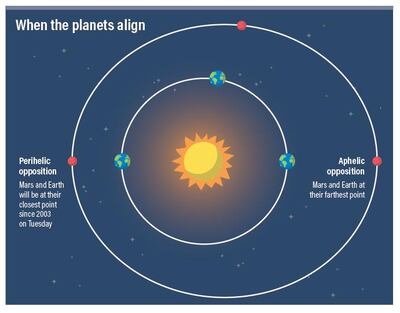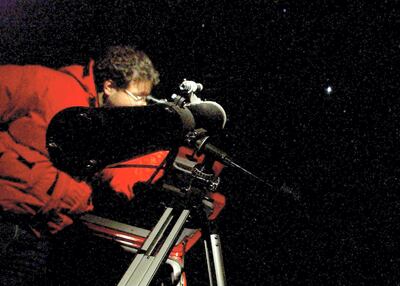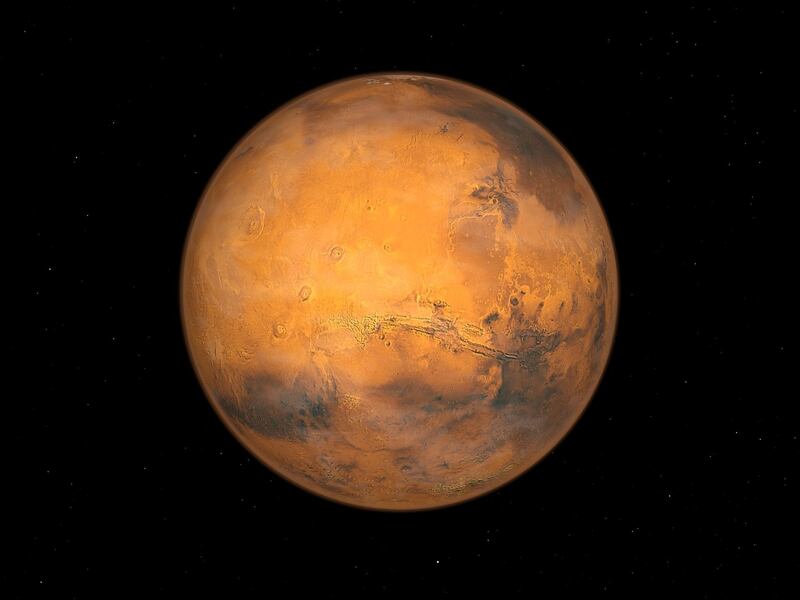Fresh from the longest lunar eclipse expected in the 21st Century, stargazers in the UAE are in for another treat on Tuesday.
Mars will be the closest to Earth since 2003 and, weather-permitting, will be clearly visible to the naked eye.
Dust clouds have rolled into the UAE in the past few days but, if they clear, the Red Planet will be visible in the eastern horizon at sunset on Tuesday and will then move to the centre of the sky. Midnight will be the best time for viewing.
That night the Moon will appear brighter than Mars, Hasan Al Hariri, chief executive of Dubai Astronomy Group.

“It will exceed the brightness of Venus and Jupiter which are the brightest in the sky after the Moon,” he said.
“It’s beautiful and amazing," said Mr Hariri, of being able to see Mars. "One of the elements we lost as humans with urban development was the attachment to the sky. In our past, we used to be connected with the stars. My mother and father used to tell us the seasons by the stars but where are the stars now? People lost that connection. When people are connected to universe, they learn a lot and become humble. It shows how fragile we are and tells us how we should maintain the Earth. This is important," he said.

Mars has been quite bright over the skies in the past few weeks in what's known as "opposition". This is when Earth, Mars and the Sun form a direct line with Earth in the middle. If orbits were pure circles, that is as close as both would get. However, orbits are oval shaped and tilted and planets get closer at certain phases of the orbit. What's happening now is known as perihelion opposition, can take Mars very close to Earth and only occurs every 15 to 17 years.
Opposition took place on Friday, the same day as the lunar eclipse, while the closest approach takes place on Tuesday when Mars will just be 57.6 million kilometres away. Normally Mars is about 225m km from Earth and at the farthest, they are about 400m km apart.
_______________
Read more:
Emirati astronomer collaborates with NYUAD on black holes research
Love for the night sky leads Emirati to build the UAE's first space observatory
[ Scientists hope to unveil first-ever image of a black hole with the Event Horizon Telescope ]
_______________
Stargazers can head to the Thuraya Astronomy Centre at Dubai's Mushrif Park and bring their own telescope or rent one for a small fee. Otherwise you can view Mars with your own eyes and learn from the experts at the centre.
“Weather-permitting we welcome people to come down. You can sit down, chat and observe. And we can guide them,” said Mr Al Hariri.
And if you miss the event, there are only 17 more years to wait. The next time Mars will be this close is 2035. But Mars will still be visible in the sky over the next few weeks but will gradually get dimmer.
Last Friday, the UAE and other parts of the world experienced what is expected to be the longest lunar eclipse of the 21st century. The moon was eclipsed by Earth’s shadow turning from bright white to dark red as the sun’s ray’s reflected around Earth.







